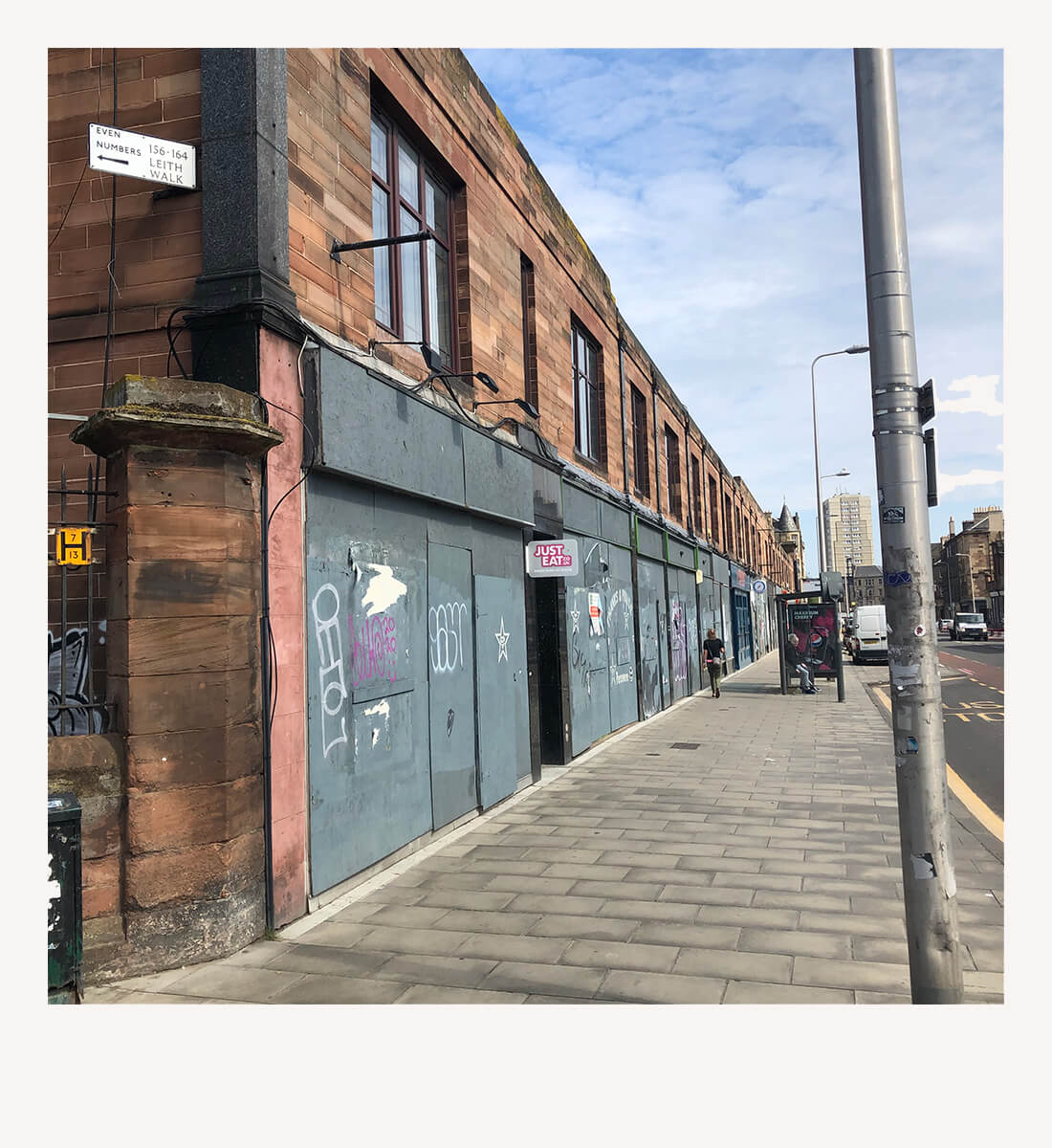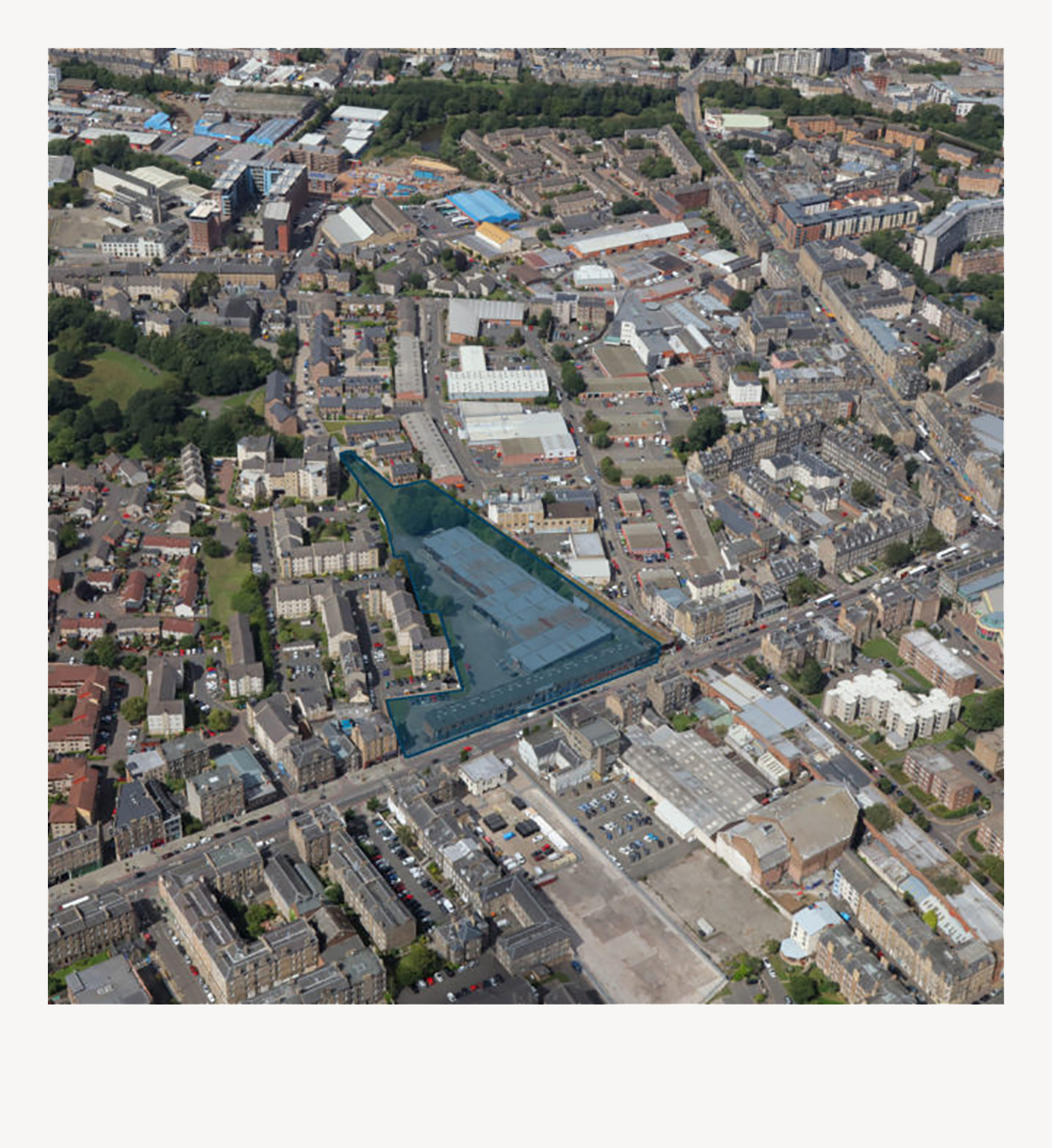Background
Stead’s Place – Development Timeline
2008
The 2.9-acre Stead’s Place site is first earmarked for development by the City of Edinburgh Council and becomes one of the city’s most prominent gap sites.

Spring 2017
Drum Property Group purchases the site.
Spring 2018
Drum launches a comprehensive consultation programme - including five days of public exhibitions and setting up a community liaison group.
August 2018
Drum submits a planning application to the City of Edinburgh Council for a £50 million mixed-use development plan comprising homes, student accommodation and a hotel - plus a row of retail and restaurant/café outlets overlooking Leith Walk replacing the original sandstone building.

November 2018
Revised proposals are submitted reducing the Leith Walk elevation by one storey to keep the building in line with surrounding tenements. The revised proposals, which followed detailed discussions with the local community and the City of Edinburgh Council’s planning team, also include a more defined and distinct row for the sandstone retail units as well as increased provision for cyclists and pedestrians. The proposals receive more than 700 letters of public support.
January 23rd 2019
The City of Edinburgh Council planning officers recommend approval for Drum’s revised planning application.
January 30th 2019
Despite the Council planning officers recommending approval, Drum’s planning application is refused by the City of Edinburgh Council’s planning committee.
May 2019
Drum lodges an appeal with the Scottish Government challenging the Council’s decision not to grant planning approval for the revised planning application.
December 2019
The Scottish Government Reporter decides not to uphold Drum’s appeal challenging the City of Edinburgh Council’s decision to refuse planning approval for the Stead’s Place development.

April 2020
Drum launches a Proposal of Application Notice (PAN) with new proposals to retain the original sandstone building overlooking Leith Walk, which will be refurbished and made available for a range of commercial uses. The existing industrial units located directly behind Leith Walk are to be demolished and replaced with a new residential-led landscaped development linking to Pilrig Park and beyond.
July 2020
Drum launches an online consultation programme in line with Scottish Government advice following the restrictions in public movement imposed by the coronavirus pandemic.
November 2020
Following extensive feedback from the first online event, Drum launches a second online consultation event in advance of a planning application being submitted.
December 14th 2020
Drum submits a revised planning application to the City of Edinburgh Council following consultation feedback showing more than 80% of consultees wanted to see the site developed.
June 2021
The City of Edinburgh Council grants planning consent for Drum’s revised proposals.
February 2022
Drum starts the refurbishment of the red sandstone building fronting on to Leith Walk.
July 2022
Drum commences construction of the residential development linking Leith Walk and Pilrig Park.